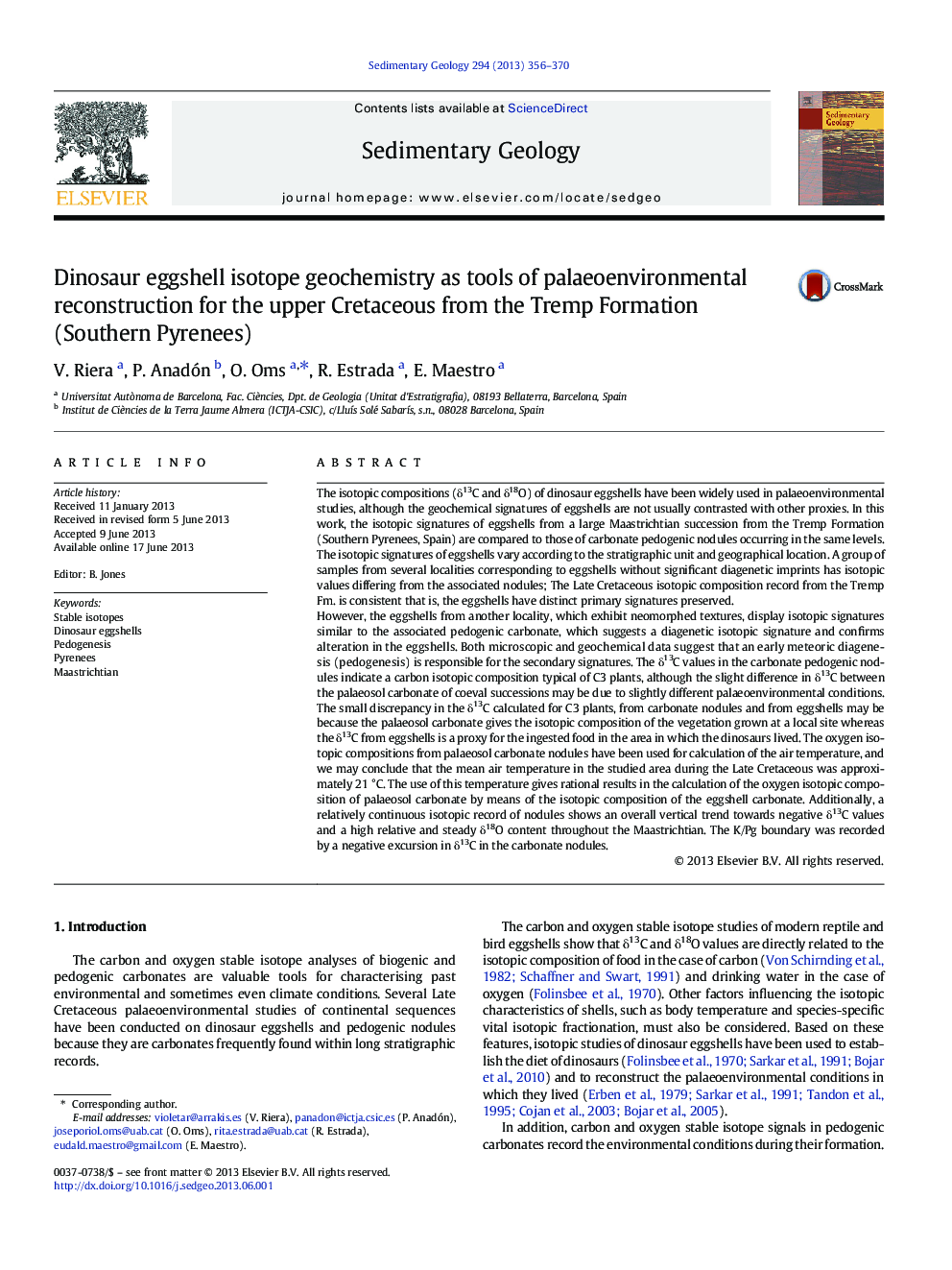| کد مقاله | کد نشریه | سال انتشار | مقاله انگلیسی | نسخه تمام متن |
|---|---|---|---|---|
| 6433231 | 1636069 | 2013 | 15 صفحه PDF | دانلود رایگان |
- Late Cretaceous edaphic nodules and dinosaur eggshells as palaeoenvironmental proxies
- Overlap of isotope signatures of eggshells and nodules points to eggshell diagenesis.
- Maastrichtian nodules show a negative vertical trend in δ13C and high and steady δ18O.
The isotopic compositions (δ13C and δ18O) of dinosaur eggshells have been widely used in palaeoenvironmental studies, although the geochemical signatures of eggshells are not usually contrasted with other proxies. In this work, the isotopic signatures of eggshells from a large Maastrichtian succession from the Tremp Formation (Southern Pyrenees, Spain) are compared to those of carbonate pedogenic nodules occurring in the same levels. The isotopic signatures of eggshells vary according to the stratigraphic unit and geographical location. A group of samples from several localities corresponding to eggshells without significant diagenetic imprints has isotopic values differing from the associated nodules; The Late Cretaceous isotopic composition record from the Tremp Fm. is consistent that is, the eggshells have distinct primary signatures preserved.However, the eggshells from another locality, which exhibit neomorphed textures, display isotopic signatures similar to the associated pedogenic carbonate, which suggests a diagenetic isotopic signature and confirms alteration in the eggshells. Both microscopic and geochemical data suggest that an early meteoric diagenesis (pedogenesis) is responsible for the secondary signatures. The δ13C values in the carbonate pedogenic nodules indicate a carbon isotopic composition typical of C3 plants, although the slight difference in δ13C between the palaeosol carbonate of coeval successions may be due to slightly different palaeoenvironmental conditions. The small discrepancy in the δ13C calculated for C3 plants, from carbonate nodules and from eggshells may be because the palaeosol carbonate gives the isotopic composition of the vegetation grown at a local site whereas the δ13C from eggshells is a proxy for the ingested food in the area in which the dinosaurs lived. The oxygen isotopic compositions from palaeosol carbonate nodules have been used for calculation of the air temperature, and we may conclude that the mean air temperature in the studied area during the Late Cretaceous was approximately 21 °C. The use of this temperature gives rational results in the calculation of the oxygen isotopic composition of palaeosol carbonate by means of the isotopic composition of the eggshell carbonate. Additionally, a relatively continuous isotopic record of nodules shows an overall vertical trend towards negative δ13C values and a high relative and steady δ18O content throughout the Maastrichtian. The K/Pg boundary was recorded by a negative excursion in δ13C in the carbonate nodules.
Journal: Sedimentary Geology - Volume 294, 15 August 2013, Pages 356-370
